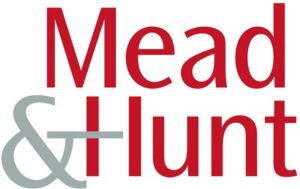Myth: Trickle Down Economics Works Since the days of Ronald Reagan, many have promoted the…

Small Business Case Study
Diversity, equity & inclusion (DEI) small business case study
Spectra Diversity Client: Wendy Culver, Chief Human Resources Officer at Mead & Hunt
Mead & Hunt is a national engineering and architecture firm founded in 1900. As of 2021, the firm has about 900 employees and prides itself on valuing its people:
“We believe our company—and our world—is made better when we put people first. This includes our clients, our employees, and our communities.”[i]
Mead & Hunt (M&H) is entirely employee-owned and boasts one of the lowest turnover rates in the industry. The Spectra Diversity Inclusion Assessment was conducted in Fall of 2019, and at the time, M&H had about 700 employees.
Although it is slowly changing, engineering and architecture are primarily male-dominated professions. According to the National Science Board, women comprised only about 15% of the engineering workforce in 2015, as compared to about 9% in the early 1990s.[ii] In 2016, women accounted for 36% of newly licensed architects, compared to 34% in 2015. [iii]
Small Business DEI Challenge
The client sought to discern whether Mead & Hunt had any issues with diversity, equity, inclusion, and belonging of which they were not previously aware. Mead & Hunt had recently put into place an Employee Resource Group (ERG) whose main objective was to help create action plans upon receiving results from the Spectra Assessment.
Small Business DEI Goals
The firm’s primary goal was to determine if they had any diversity and inclusion related issues. There were no specific issues that Mead & Hunt wanted to address; rather, they had never conducted a survey of this sort before and felt it was an appropriate time to do so considering they just formed their first ERG.
Mead & Hunt’s secondary objective was to use the assessment results to develop an action plan that would target the firm’s areas of improvement. The company’s ERG would serve as an ad hoc focus group to formulate any plans of action deemed necessary.
Because the industry in which Mead & Hunt is situated is white male dominated, the firm predicted they would see differences in responses across gender and corporate departments.
Diversity, Equity, Inclusion Assessment Methodology
M&H sent the assessment to all 700 employees and received around 520 responses at a 75% response rate. Of these respondents:
- 350 were men, 150 were women.
- Roughly 460 (about 88%) respondents were white.
- 111 of the respondents were managers (which represents almost all of the managers at the firm) while about 400 respondents were non-managing employees.
- The largest respondent group with respect to age was employees 35-44 years old.
- About 480 employees responded that they did not have a disability, 15 employees self-reported having a disability, while 19 employees chose not to respond to this question.
Results of the Spectra Assessment
Mead & Hunt scored at the “adopt” level on the maturity model, as well as a “2” in a range of 1-3, on all of the following: Management; Policies, Practices, and Procedures; Culture.
Upon reviewing the Spectra Assessment results, the ERG task force team saw there were D&I concerns in the following areas:
- The Corporate Management Staff population encompassed roles that do not pertain directly to engineering. These teams were often more female-dominated, as opposed to the more male-dominated engineering and architecture roles. This raised questions for M&H about whether these concerns were due to the Corporate Management Staff feeling excluded for the nature of their work or if were they due to gender imbalances at the firm.
- Some employees expressed there could be improvements in talking with one’s coworkers about D&I and having more open conversations about diversity, equity, and belonging topics.
- Employees who self-reported having a disability expressed that they wanted to feel more included and more comfortable disclosing their disabilities. This was conveyed particularly by those whose disabilities cannot be seen and feel there is a stigma surrounding mental health.
- In line with the firm’s predictions, men tended to view D&I as less of an area of improvement than women.
- Older age groups tended to answer that diversity and inclusion was less important to driving positive business results than younger age groups tended to answer.
- White employees on average felt that D&I was less important to the business than POC employees felt.
 Mead & Hunt also found positive trends within the Assessment results:
Mead & Hunt also found positive trends within the Assessment results:
- Some POC employees stated they felt very positively about the culture of D&I at Mead & Hunt; specifically, Hispanic and Black employees answered higher than the average employee response in some areas.
- About 200 employees provided input to the open-ended questions, and many of these responses were expressions of gratitude that Mead & Hunt was conducting this Assessment. Employees seemed pleased that the firm was taking the time to ask for employee input.
Conclusion and Updates
Wendy Culver shared the company’s overall results with all employees and presented location-specific data to employees at each M&H office. Culver also provided the results to the ERG task force team and had them conduct a more in-depth analysis of the data. They have developed action plans to address a few specific areas of concern.
Sources:
[i] https://meadhunt.com/about/culture/
[ii] https://www.nsf.gov/statistics/2018/nsb20181/report/sections/science-and-engineering-labor-force/women-and-minorities-in-the-s-e-workforce#:~:text=Among%20engineering%20occupations%20with%20large,%2C%20aeronautical%2C%20and%20astronautical%20engineers.




